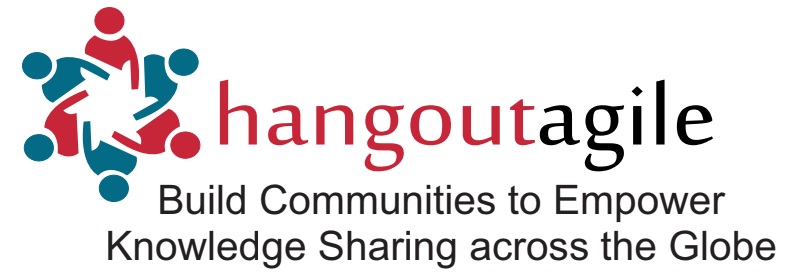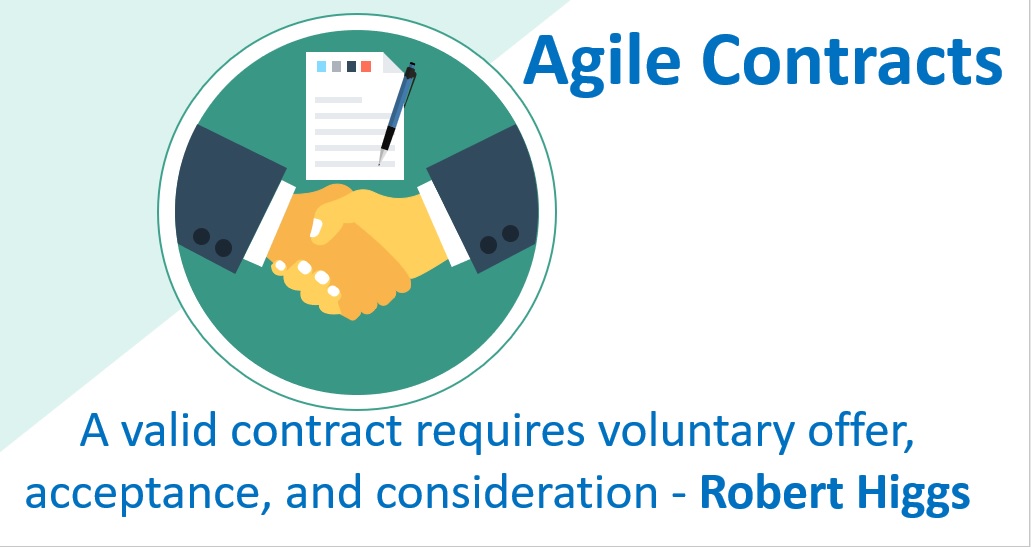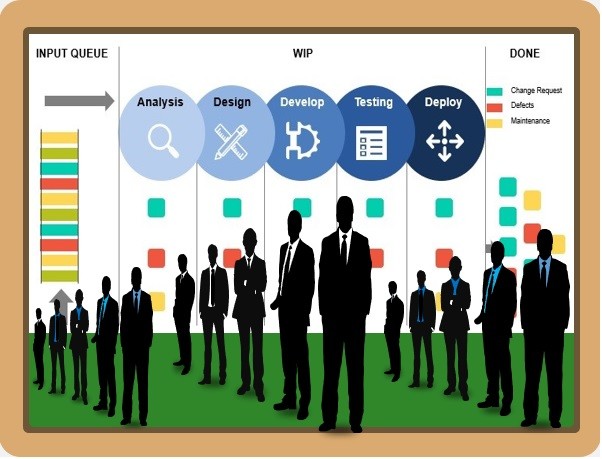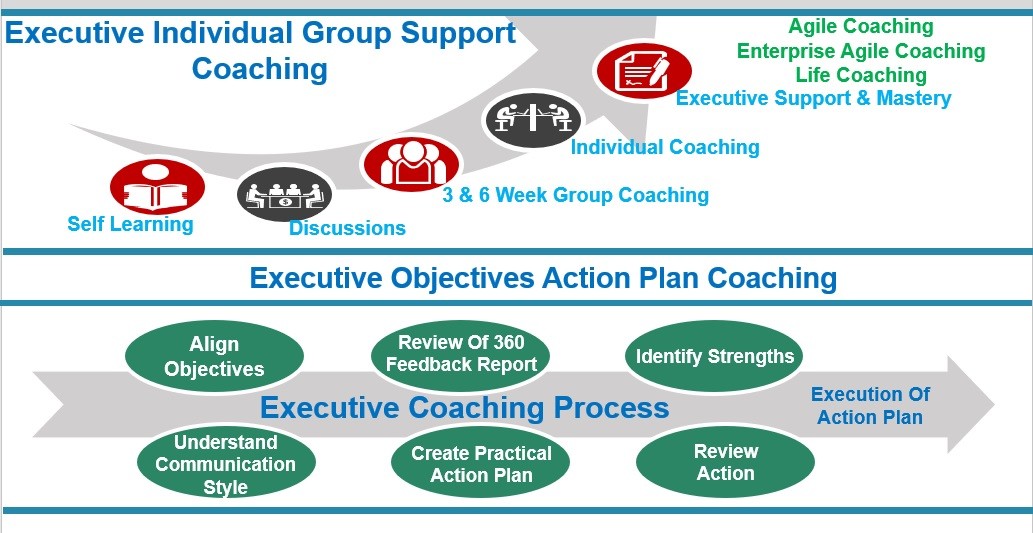Project Failures Originates from Breakdowns in Customer-Supplier Relationship.
Do You Agree? My Answer is Yes.
There comes the importance of the Agile Manifesto Value:
Customer Collaboration over Contract Negotiation
Many of the projects failures start from breakdowns in the customer-supplier relationship. The risk is high when the contract is built in the form of “Winners Vs. Losers” perspective. A collaborative approach that includes “shared-risk-reward-relationship” always creates a Win-Win situation where all sides win.
Though I have come across many such scenarios during my consulting assignments, which is beyond the scope of this article. However, I am listing a couple of scenarios for your reference and just to set the context:
- Even though the (RFP, MSA, MOU’s, SLA, Letter of Intent, Letters of Agreement or Any other written agreements) suggests Agile Approach, The Payment Terms / Milestones are not aligned with the way suggested for an Agile Contract and end up in chaos eventually leads to project failure. Unfortunately, this mismatch was noted at the end or few days before approaching for the payment, lack of proper review also played a major role here.
- Even though the (RFP, MSA, MOU’s, SLA, Letter of Intent, Letters of Agreement or Any other written agreements) suggests Agile Approach, Due to the lack of communication/collaboration between pre-sales/sales & delivery team, few of the Key Points in the Contract has not reached the delivery team, end up in chaos and that eventually leads to project failure.
A complex project may involve multiple contracts simultaneously or in sequence. In such cases, each contract life cycle may begin and end during any phase of the project lifecycle. The buyer-seller relationship may exist at many levels on any one project and between organizations internal to or external to the acquiring organization.
Any discussion about Agile Contracts reminds us of the Agile Manifesto Value:
Customer Collaboration over Contract Negotiation
It reminds us to be flexible and accommodating, rather than fixed and uncooperative and is similar to the difference between “being right” & “doing the right thing”. We could build the product exactly as originally specified, but if the customer changes their mind or priority, it would be better to be flexible and work toward the new goal, as opposed to the goal that was originally stated.
It is notoriously difficult to define an upfront, unchanging view of what should be built. This challenge stems from the dynamic nature of knowledge worker products/projects, especially software systems. Software is intangible and difficult to reference. Business needs change quickly, and technology changes rapidly. Rather than beat up the client with the change management process, that is really more of a change suppression process, we should recognize at the start the things are going to change, and we should work with the customer throughout the project toward a shared definition of “done”. This requires a more trusting relationship and more flexible contract models.
Agile Project Contracting Techniques
- Multi-tiered Structure: Instead of formalizing the entire contracting relationship in a single document, gain flexibility by describing different aspects in different documents. For example, fixed items like warranties and arbitration can be locked in a Master Service Agreement. Variable items like Service Rates and Product Descriptions can be included in a schedule of services.
- Emphasize Value Delivered: Exclude fixed milestones or phase gates focused on intermediate artifacts as these controls limit the use of feedback to improve the product. Include milestones and payment terms which can be structured based on value-driven deliverable in order to enhance the project Agility.
- Fixed-price Increments: Decompose the Project Scope into Fixed-Price Micro deliverable such as user stories. For the Customer, this will give more control over how the money is spent. For the supplier, it limits the financial risk of over-commitment to a single feature or deliverable.
- Not-to-exceed Time & Materials: This allows the customer to incorporate new ideas and innovations into the project not originally planned. However, the new ideas and innovations will have to manage to a given capacity, replacing original work with the new work. Work should be closely monitored as hours allocated reach their limit. Additional hours could be planned into the maximum budget if considered helpful.
- Graduated Time & Materials: This is an alternative to shared financial risk approach. In agile, the quality criteria are part of what done means. Therefore, the supplier can be rewarded with a higher hourly rate when the delivery is earlier than the contracted deadline. Conversely, the supplier would suffer a rate reduction for late delivery.
- Early Cancellation Option: When an Agile supplier delivers sufficient value with the half of the scope completed, the customer should not be bound to pay the remaining half if the customer no longer needs it. Instead, a contract can offer the customer to buy the remainder of the project for a cancellation fee. The customer limits budget exposure and the supplier earns the positive revenue for services no longer required.
- Dynamic Scope Option: This option is suitable for contracts with a fixed budget, a supplier may offer the customer the option to vary the project scope at specified points in the project. The customer can adjust features to fit the capacity. Then the customer can leverage innovation opportunities while limiting the supplier’s risk of over commitment.
- Team Augmentation: This is the most collaborative contracting approach is to embed the supplier’s services directly into the customer organization. Funding teams instead of specific preserves the customer’s strategic discretion on what work should actually be done.
- Favor Full-Service Suppliers: As part of diversifying the risk, customers may seek a multi-supplier strategy. However, the temptation will be to contract the work such that each supplier does only one thing, which creates a web of dependencies before any usable services or product emerges. Instead, place an emphasis on engagements that deliver full value.
Closing Thoughts
Agile Manifesto emphasizes valuing …
Customer Collaboration Over Contract Negotiation
… and the above discussed Agile Contracting Techniques can enable you to increase Customer Collaboration. Do You Agree?
Please share your views as comments and also do a comparison of your current Agile Project Contract to understand the compatibility with this Agile Manifesto Value.
You could also visit my other Articles on https://www.hangoutagile.com/blog
Join our Whats-app Group (+91 702 538 1111 – Hangoutagile Community) specifically to discuss your:
- Day to day business challenges
- Learning on Lean/Kanban/Agile Transformation & Coaching
- Best Practices on Lean/Kanban/Agile Transformation & Coaching
- Experience on Lean/Kanban/Agile Transformation & Coaching
Please share your Cell Number along with LinkedIn Profile URL to the Email ID: Nadia@diaame.com OR WhatsApp to +91 702 538 1111.
Are You Curious to Participate in any of My Agile Coaching or Training Certification Events, Please write to Info@diaame.com
!!! :-😊) HAPPY LEARNING :-😊) !!!





